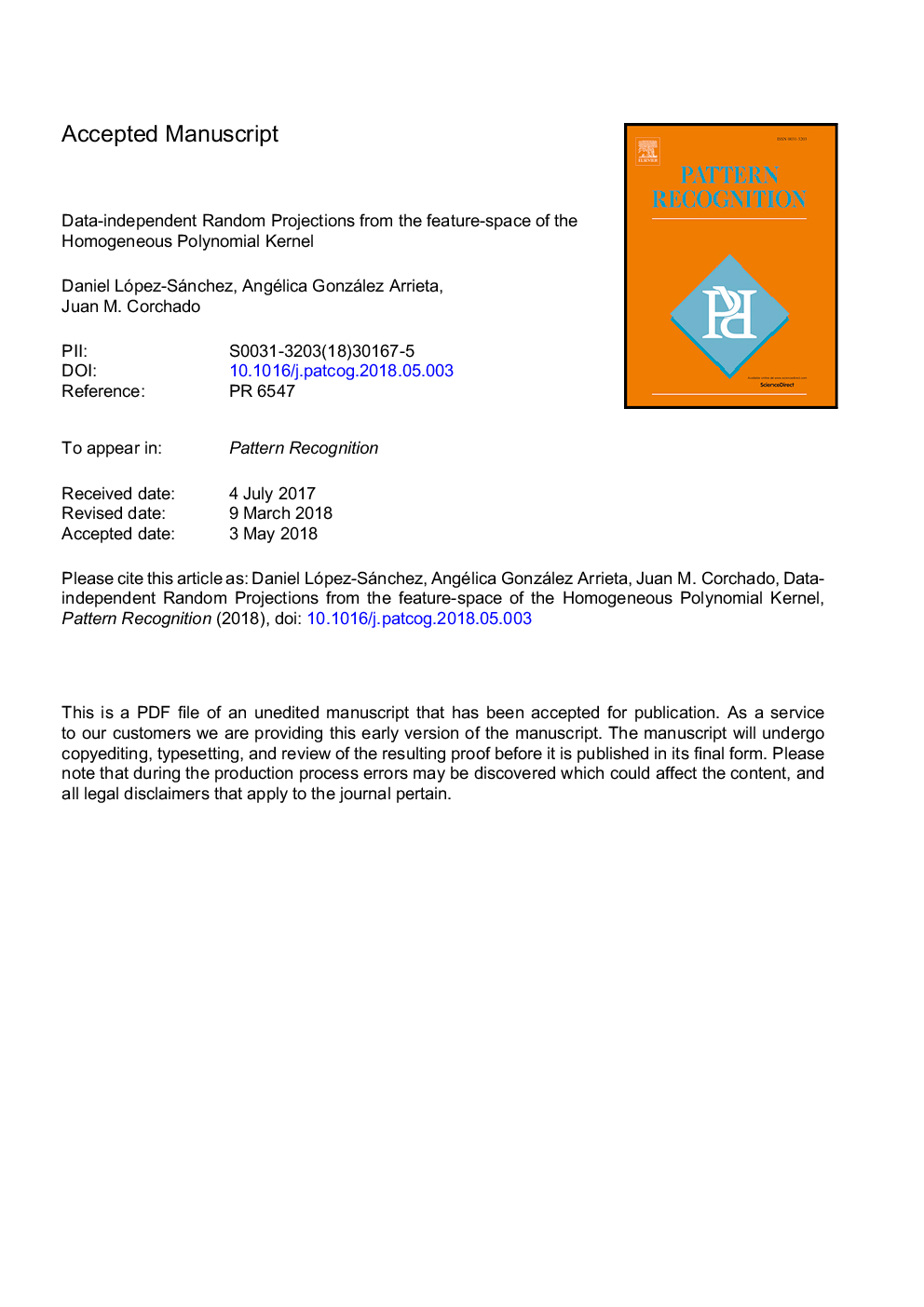| Article ID | Journal | Published Year | Pages | File Type |
|---|---|---|---|---|
| 6938779 | Pattern Recognition | 2018 | 27 Pages |
Abstract
Performing a Random Projection from the feature space associated to a kernel function may be important for two main reasons. (1) As a consequence of the Johnson-Lindestrauss lemma, the resulting low-dimensional representation will preserve most of the structure of data in the kernel feature space and (2) an efficient linear classifier trained on transformed data might approximate the accuracy of its nonlinear counterparts. In this paper, we present a novel method to perform Random Projections from the feature space of homogeneous polynomial kernels. As opposed to other kernelized Random Projection proposals, our method focuses on a specific kernel family to preserve some of the beneficial properties of the original Random Projection algorithm (e.g. data independence and efficiency). Our extensive experimental results evidence that the proposed method efficiently approximates a Random Projection from the kernel feature space, preserving pairwise distances and enabling a boost on linear classification accuracies.
Related Topics
Physical Sciences and Engineering
Computer Science
Computer Vision and Pattern Recognition
Authors
Daniel López-Sánchez, Angélica González Arrieta, Juan M. Corchado,
